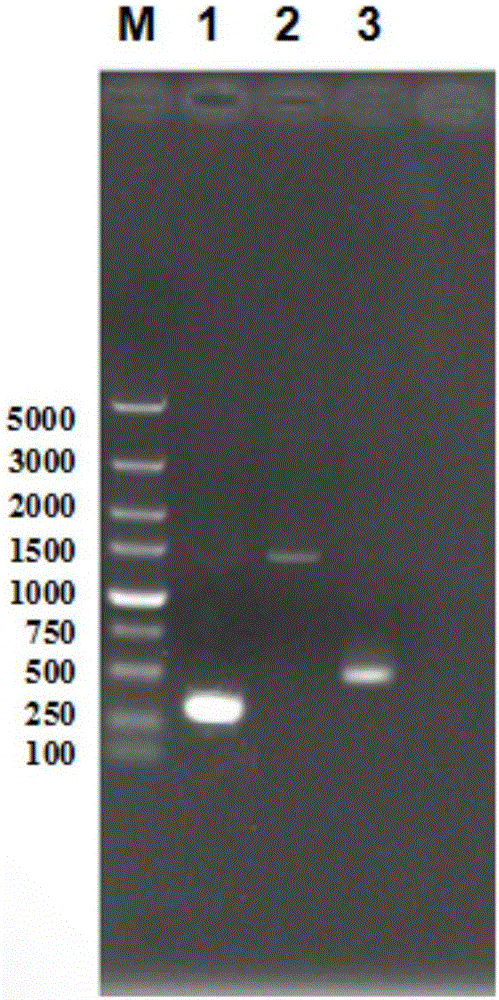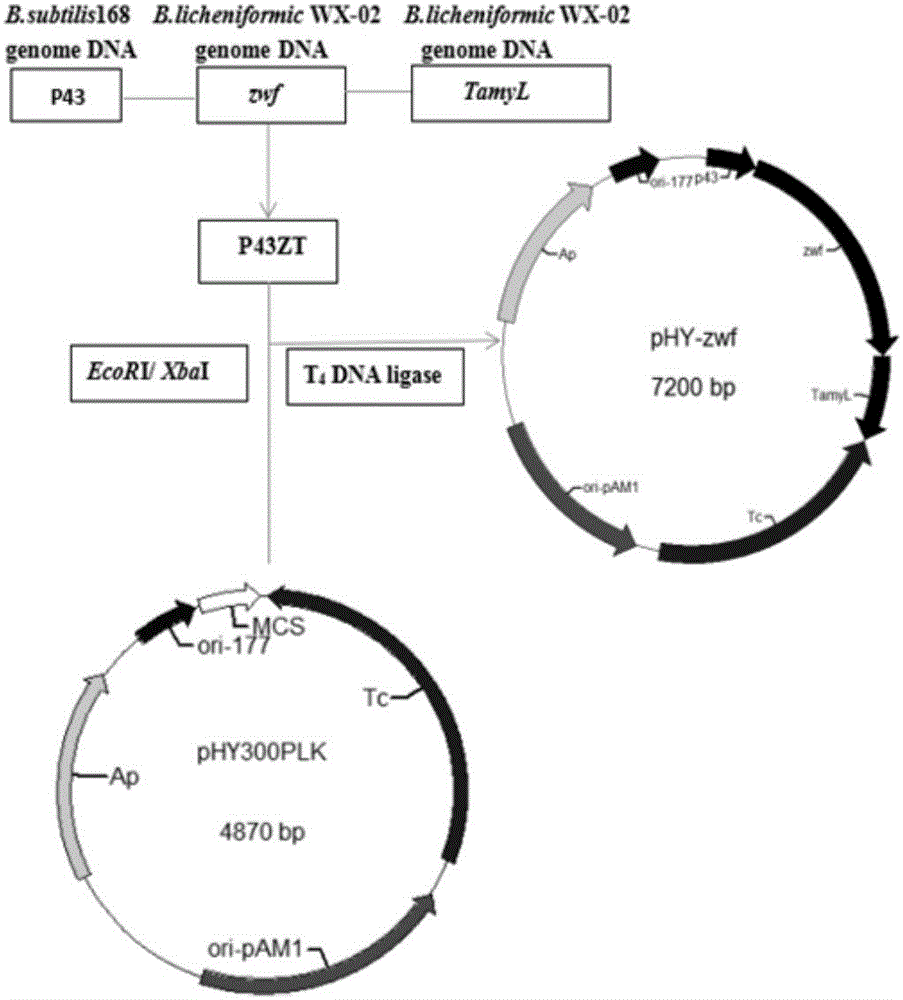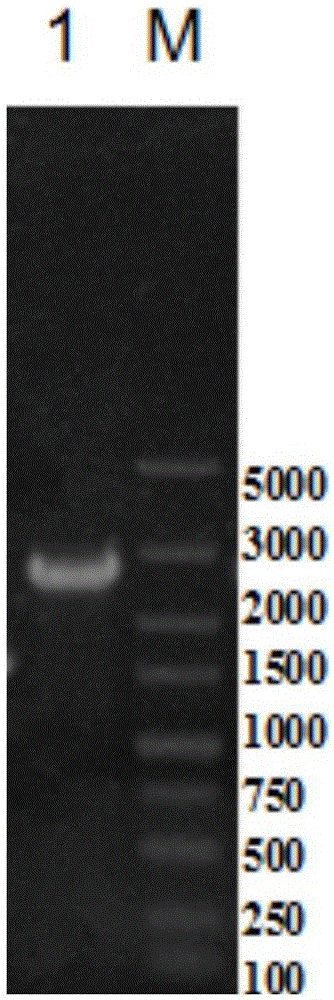Bacillus licheniformis engineered bacterium capable of high production of poly-Gamma-glutamic acid
A technology of Bacillus licheniformis and glutamic acid, which is applied in the field of genetic engineering and microbial metabolic engineering, can solve the problem that no one has studied the fermentation yield of poly-γ-glutamic acid, achieve broad application prospects, and increase yield
- Summary
- Abstract
- Description
- Claims
- Application Information
AI Technical Summary
Problems solved by technology
Method used
Image
Examples
Embodiment 1
[0027] This example provides Bacillus licheniformis WX-02 / pHY-zwf and its construction method.
[0028] 1 Cloning of expression elements in recombinant vectors
[0029] Using the total DNA of Bacillus subtilis 168 as a template, according to the genome sequence of Bacillus subtilis 168 published by NCBI, the promoter P43 sequence SEQ ID NO: 1 was amplified by PCR method, and the primers were P43-F SEQ ID NO :2, P43-R SEQ ID NO: 3; using the total DNA of Bacillus licheniformis WX-02 as a template, according to the genome sequence of Bacillus licheniformis WX-02 published on NCBI, the method for amplifying 6-glucose phosphate by PCR Dehydrogenase gene zwf sequence SEQ ID NO: 4, primers are zwf-F SEQ ID NO: 5, zwf-R SEQ ID NO: 6; using the total DNA of Bacillus licheniformis WX-02 as a template, according to the lichen published on NCBI For the genome sequence of Bacillus sp. WX-02, the amylase gene amyL terminator sequence SEQ ID NO: 7 was amplified by PCR method, and the prime...
Embodiment 2
[0039] This example provides a method for producing poly-γ-glutamic acid by Bacillus licheniformis WX-02 / pHY-zwf. Fermentation experiments were carried out under different fermentation conditions by Bacillus licheniformis WX-02 / pHY-zwf to obtain high-yield poly-γ-glutamic acid. Glutamate method.
[0040] The poly-γ-glutamic acid that described fermentation experiment obtains all adopts following measuring method and quantitative method:
[0041] Add 2 times the volume of absolute ethanol to 2.0 mL of fermentation broth, shake and mix, and centrifuge at 8000 r / min for 10 min. Discard the supernatant, and dissolve the centrifuged pellet with 2.0 mL deionized water, and shake evenly. Take 1.0mL of the solution in a colorimetric tube, add 1mL of concentrated hydrochloric acid, seal it and hydrolyze it at 100°C for 24h. After hydrolysis, dilute to 10 mL with 1 mol / L NaOH, and then filter through a 0.22 μm microporous membrane. Lichrospher C18 chromatographic column (25cm×4.6mm) ...
Embodiment 3
[0068] This example provides a method for Bacillus licheniformis WX-02 / pHY-zwf to produce poly-γ-glutamic acid in an optimized medium, and the specific steps include:
[0069] Pick the colony WX-02 / pHY-zwf and inoculate it in 5 mL of LB medium, and cultivate overnight at 37°C with shaking at 240r / min. Then transfer 1% inoculum to 50mL fresh LB medium until OD600 is 1.0, inoculate 1% inoculum into the pre-prepared optimized medium, 40°C, 240r / min, fermentation time 36h.
[0070] The optimized medium: 100g / L glucose; 12g / L NH 4 Cl; 5g / L sodium citrate; 10g / L sodium glutamate; 1.5g / LK 2 HPO 4 ·3H 2 O; 1.5g / LMgSO 4 ·7H 2 O; 1.5g / LZnSO 4 ·7H 2 O; 1.5g / LCaCl 2 ;0.15g / LMnSO 4 ·H 2 O; pH 8.0.
[0071] The obtained fermentation result is basically consistent with that of Example 2, and the yield of poly-γ-glutamic acid is significantly improved compared with the original strain.
PUM
 Login to View More
Login to View More Abstract
Description
Claims
Application Information
 Login to View More
Login to View More - R&D
- Intellectual Property
- Life Sciences
- Materials
- Tech Scout
- Unparalleled Data Quality
- Higher Quality Content
- 60% Fewer Hallucinations
Browse by: Latest US Patents, China's latest patents, Technical Efficacy Thesaurus, Application Domain, Technology Topic, Popular Technical Reports.
© 2025 PatSnap. All rights reserved.Legal|Privacy policy|Modern Slavery Act Transparency Statement|Sitemap|About US| Contact US: help@patsnap.com



